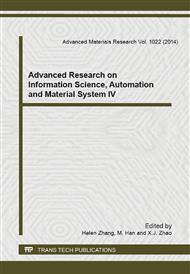[1]
D.A. Griffin. WindPACT Turbine Design Scaling Studies Technical Area 1 - Composite Blades for 80- to 120-Meter Rotor. NREL /SR-500-29492, Golden, CO, National Renewable Energy Laboratory (2001).
DOI: 10.2172/783406
Google Scholar
[2]
Balduzzi F. Feasibility analysis of a Darrieus vertical-axis wind turbine installation in the rooftop of a building[J]. Applied Energy (2011).
DOI: 10.1016/j.apenergy.2011.12.008
Google Scholar
[3]
Weifei Hu, Insik Han, Sang-Chul Park and Dong-Hoon Choi, Multi-objective structural optimization of a HAWT composite blade based on ultimate limit state analysis[J], Journal of Mechanical Science and Technology 26 (1) (2012) 129-135.
DOI: 10.1007/s12206-011-1018-3
Google Scholar
[4]
Hyung Il Kwon, Ju Yeol You and Oh Joon Kwon. Enhancement of wind turbine aerodynamic performance by a numerical opti mization technique[J], Journal of Mechanical Science and Technology 26 (2) (2012): 455-462.
DOI: 10.1007/s12206-011-1035-2
Google Scholar
[5]
A.F.P. Ribeiro, An airfoil optimization technique for wind turbines[J], Appl. Math. Modell. (2012).
Google Scholar
[6]
A.D. Wright and L.J. Fingersh, Advanced Control Design for Wind Turbines: Part I, Control Design, Implementation, and Initial Tests. NREL /TP-500-42437, Golden, CO, National Renewable Energy Laboratory (2008).
DOI: 10.2172/927269
Google Scholar
[7]
D. Lobitz, P. Veers, G. Eisler, D. Laino, P. Migliore and G. Bir. The Use of Twist-Coupled Blades to Enhance Performance of Horizontal Axis Wind Turbines, SAND2001-1303, Albuquerque, NM, Sandia National Laboratories (2001).
DOI: 10.2172/783086
Google Scholar
[8]
J. Paquette, J. van Dam and S. Hughes, Structural Testing of 9 m Carbon Fiber Wind Turbine Research Blades, AIAA 2007, Wind Energy Symposium, Reno Nevada, NREL/CP-500-40985, Golden, CO, National Renewable Energy Laboratory.
DOI: 10.2514/6.2007-816
Google Scholar
[9]
JAMES E, LOCKE, and THOMAS M HERMANN. Laminate design for coupled wind turbine blades[A]. 44th AIAAaerospace sciences meeting and xhibit[C]. RenoNevada, (2006).
DOI: 10.2514/6.2006-1198
Google Scholar
[10]
Denis Matha, Markus Schlipf, Andrew Cordle and Ricardo Pereira. Challenges in Simulation of Aerodynamics, Hydrodynamics and Mooring-Line Dynamics of Floating Offshore Wind Turbines[C], Presented at the 21st International Offshore and Polar Engineering Conference, 19-24 June 2011, Maui, Hawaii.
Google Scholar
[11]
J.A. Carta , P. Ram ´rez and S. Vela ´zquez. A review of wind speed probability distributions used in wind energy analysis Case studies in the Canary Islands[J]. Renewable and Sustainable Energy Review 2009: 13(933-955).
DOI: 10.1016/j.rser.2008.05.005
Google Scholar
[12]
K.K. Wetzel. Utility Scale Twist-Flap Coupled Blade Design[J]. Journal of Solar Energy Engineering, 2005(127): 529-537.
DOI: 10.1115/1.2037089
Google Scholar
[13]
Seungmin Lee, Hogeon Kim, Eunkuk Son and Soogab Lee. Effects of design parameters on aerodynamic performance of a counter-rotating wind turbine[J], Renewable Energy 42 (2012): 140-144.
DOI: 10.1016/j.renene.2011.08.046
Google Scholar
[14]
A. Maheri, S Noroozi and J Vinney. Decoupled aerodynamic and structural design of wind turbine adaptive blades[J]. Renewable Energy, 2007(32): 1753–1767.
DOI: 10.1016/j.renene.2006.11.004
Google Scholar
[15]
Yuwei Li, Kwang-Jun Paik and Tao Xing. Dynamic overset CFD simulations of wind turbine aerodynamic[J], Renewable Energy 37 (2012) : 285-298.
DOI: 10.1016/j.renene.2011.06.029
Google Scholar
[16]
Kenji Takizawa, Bradley Henicke and Darren Montes. Numerical performance studies for the stabilized space-time computation of wind turbine rotor aerodynamics[J], Comput Mech (2011) 48: 647-657.
DOI: 10.1007/s00466-011-0614-5
Google Scholar


